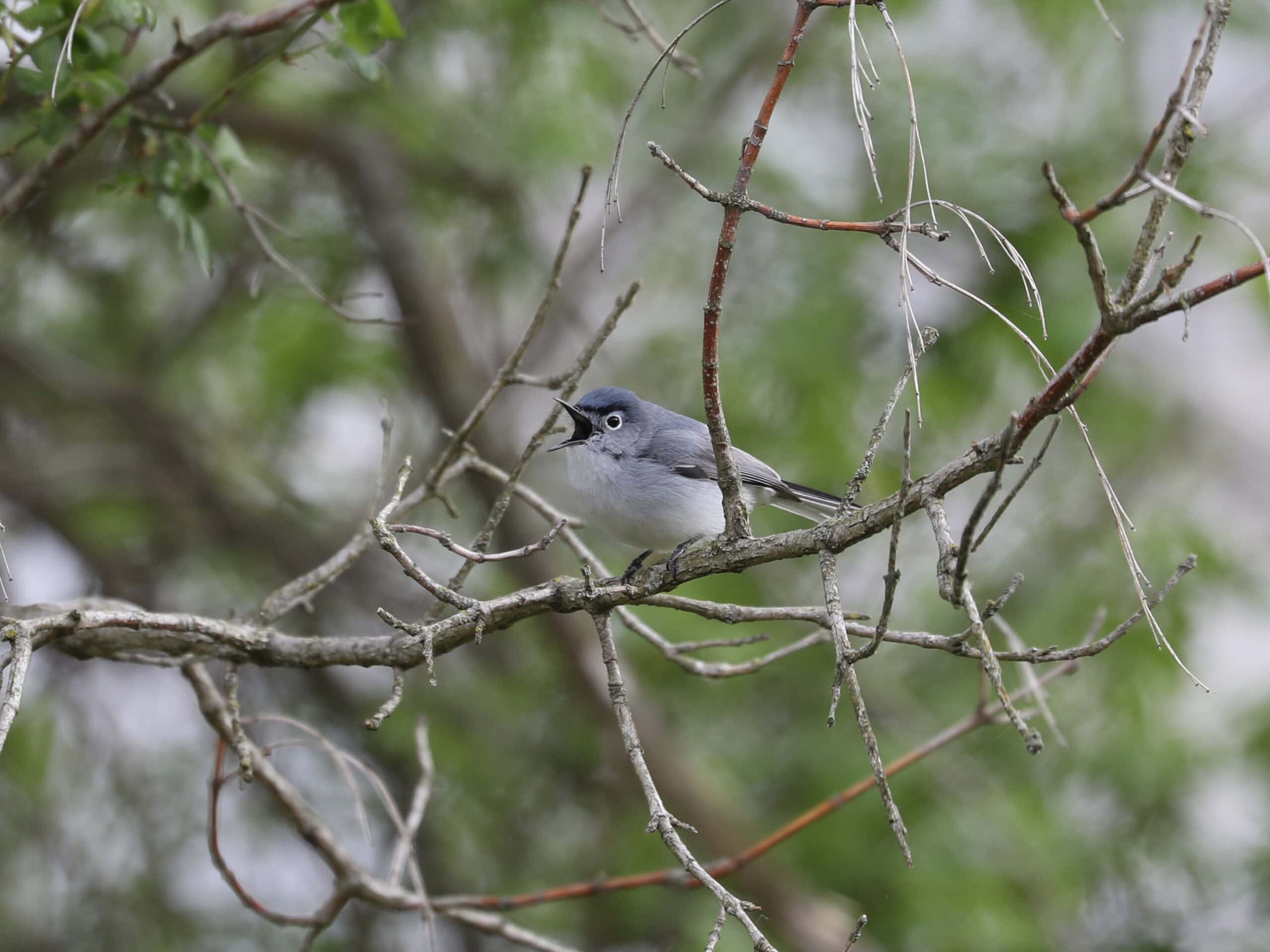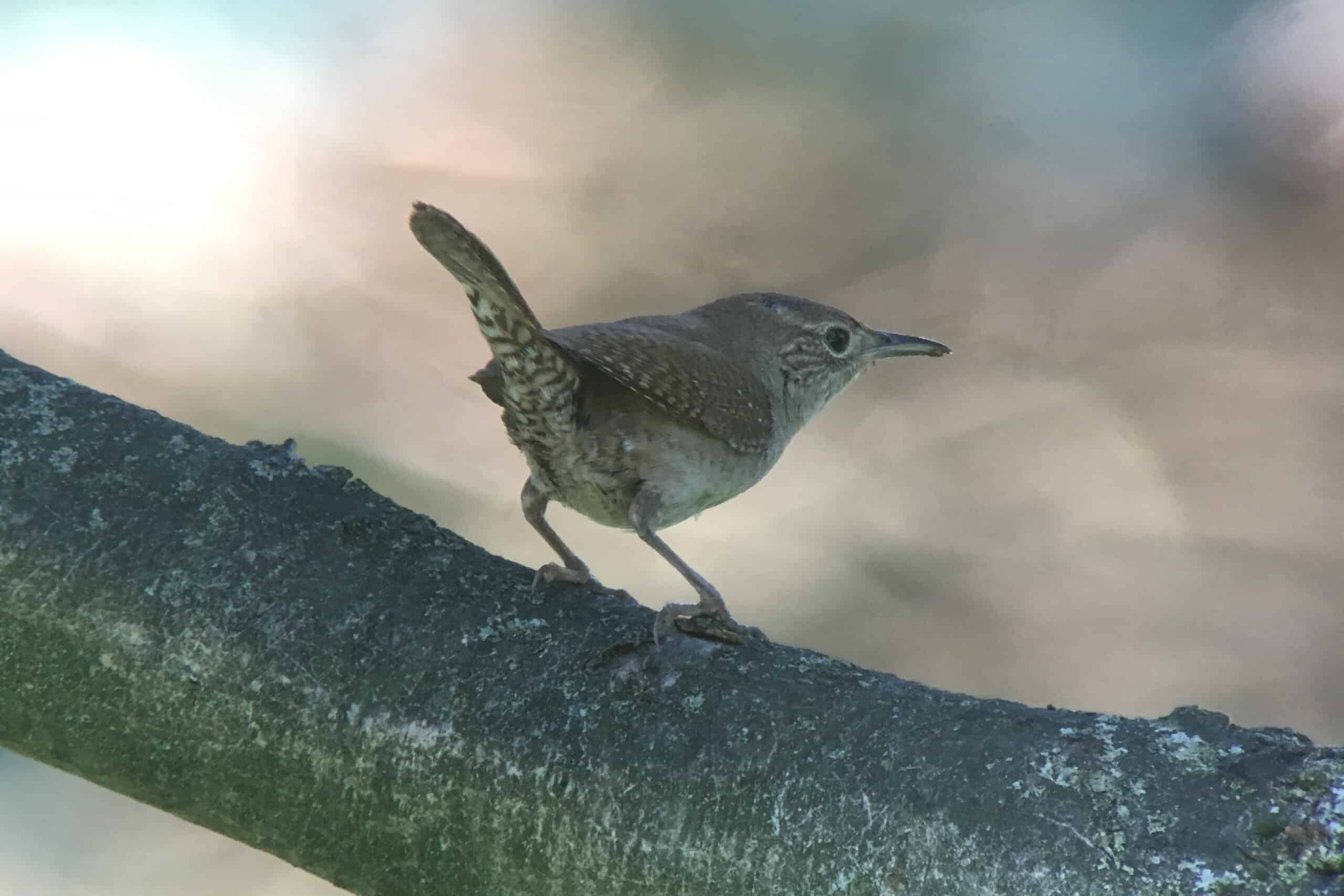Tiny Bug-Eaters: Blue-gray Gnatcatcher
A lot of insectivorous birds leave Pennsylvania during the winter when there are few insects and spiders to be found. Many are returning to our area this time of year, including flycatchers, warblers, vireos, and this Blue-gray Gnatcatcher I photographed last week. Blue-gray Gnatcatchers nest throughout the eastern and southwestern United States and most of Mexico. In winter, they’re mostly found in Mexico, Guatemala, Honduras, Cuba, and along the southern edge of the United States.
Gnatcatchers are one of our smallest birds, weighing only 5 to 7 grams. You would need about 378 gnatcatchers to equal the weight of a 5-pound bag of bird seed! As their name implies, Blue-Gray Gnatcatchers are bluish gray in color. The bird in the photo above is an adult male, which you can tell by the black “angry eyebrows” pattern above its eyes. When a gnatcatcher flies, you’ll see white edges on its tail, similar to the pattern of a junco tail. Their tail is long for such a small bird, accounting for nearly half of the body length.
Gnatcatchers are found only in the Western Hemisphere. The Blue-gray Gnatcatcher is the only species that comes to Pennsylvania. Three other species are found in the western United States, and another 13 are found in Mexico, Central America, and South America. Recent research has shown that the gnatcatchers are closely related to wrens, like the Northern House Wren in the photo below.
Tiny Bug-Eaters: Blue-gray Gnatcatcher
A lot of insectivorous birds leave Pennsylvania during the winter when there are few insects and spiders to be found. Many are returning to our area this time of year, including flycatchers, warblers, vireos, and this Blue-gray Gnatcatcher I photographed last week. Blue-gray Gnatcatchers nest throughout the eastern and southwestern United States and most of Mexico. In winter, they’re mostly found in Mexico, Guatemala, Honduras, Cuba, and along the southern edge of the United States.
Gnatcatchers are one of our smallest birds, weighing only 5 to 7 grams. You would need about 378 gnatcatchers to equal the weight of a 5-pound bag of bird seed! As their name implies, Blue-Gray Gnatcatchers are bluish gray in color. The bird in the photo above is an adult male, which you can tell by the black “angry eyebrows” pattern above its eyes. When a gnatcatcher flies, you’ll see white edges on its tail, similar to the pattern of a junco tail. Their tail is long for such a small bird, accounting for nearly half of the body length.
Gnatcatchers are found only in the Western Hemisphere. The Blue-gray Gnatcatcher is the only species that comes to Pennsylvania. Three other species are found in the western United States, and another 13 are found in Mexico, Central America, and South America. Recent research has shown that the gnatcatchers are closely related to wrens, like the Northern House Wren in the photo below.
About The Author
Dan Hinnebusch is the Ornithologist for Wild Birds Unlimited. Click to learn more.





